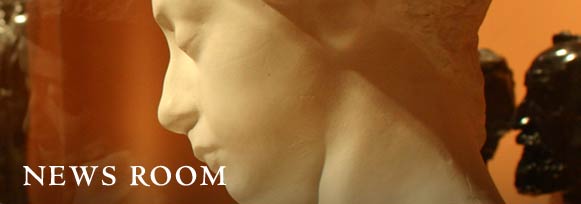Large-Scale, Color Photographs by Edward Burtynsky Examine "Manufactured Landscapes"
Only Northern California Viewing of Exhibition
June 29–September 18, 2005
Stanford, California, November 12, 2004—The Cantor Arts Center at Stanford University announces a major retrospective of the work of internationally-renowned photographer Edward Burtynsky to be shown June 29–September 18, 2005. Manufactured Landscapes: The Photographs of Edward Burtynsky features approximately 30 large-scale color works by the Canadian photographer, depicting unfamiliar places where industrial activity has reshaped the surface of the land—landscapes created by mining, quarrying, railcutting, recycling, oil refining, and shipbreaking. "While Burtynsky's photographs may be disturbing, they also have an unexpected beauty, subverting our usual notions of the sublime in nature," said Hilarie Faberman, the Cantor Arts Center curator responsible for the exhibition's presentation at Stanford. "This is the first major examination of Burtynsky's work, bringing together works from both public and private collections, and we are pleased to be able present it here." Over the past 25 years, Burtynsky has explored unfamiliar places of modern industrial activity. The artist, who says he is "fascinated by what we use and how we get it," has been examining the intersections between land and technology both for their inherent, unorthodox beauty and for the ways in which they reflect the culture that created them. His photographs are not intended to alert us to the devastation caused by industry, nor are they meant to celebrate the achievements of technological progress. They serve to reconnect viewers to the aspects of manufacturing and technological production that are usually ignored or at least rarely considered. At the same time, those photographs challenge viewers to redefine their concept of what constitutes a landscape. Manufactured Landscapes: The Photographs of Edward Burtynsky is organized by the National Gallery of Canada. An illustrated, color catalogue accompanies the exhibition. For presentation at Stanford, Faberman selected about 30 works from the original exhibition of approximately 60 photographs. After viewing at Stanford, the exhibition will tour to the Brooklyn Museum of Art, New York, October 7, 2005–January 15, 2006. The exhibition's presentation at Stanford is supported by the Halperin Exhibitions Fund. |
VISITOR INFORMATION: The Cantor Arts Center is open Wednesday - Sunday, 11 a.m. - 5 p.m., Thursday until 8 p.m. Admission is free. The Center is located on the Stanford campus off Palm Drive, at Lomita Drive and Museum Way. Parking is free after 4 p.m. and all day on weekends. Weekday pay parking is available in front of the Center and in the parking garage nearby. For information, call 650-723-4177.
Photographs available upon request
Contact Anna Koster, PR Manager, Cantor Arts Center at Stanford University
650-725-4657 fax 650-725-0464



